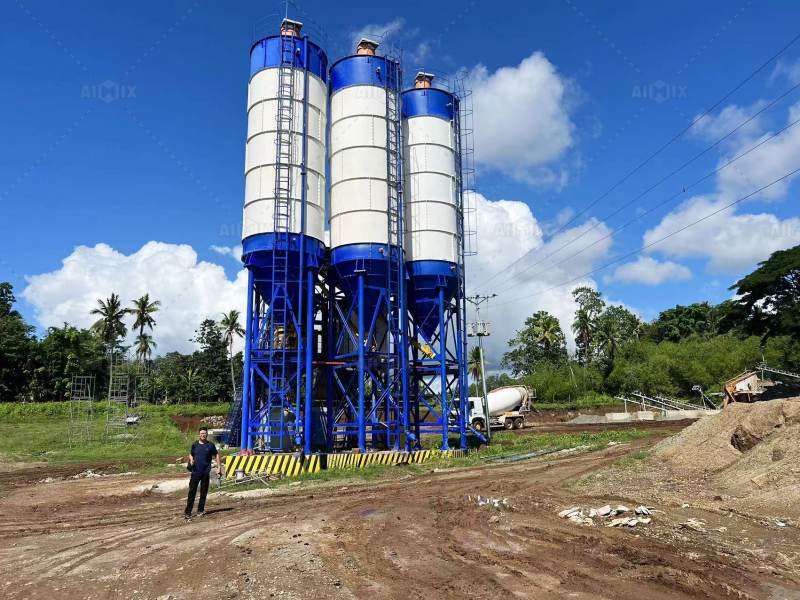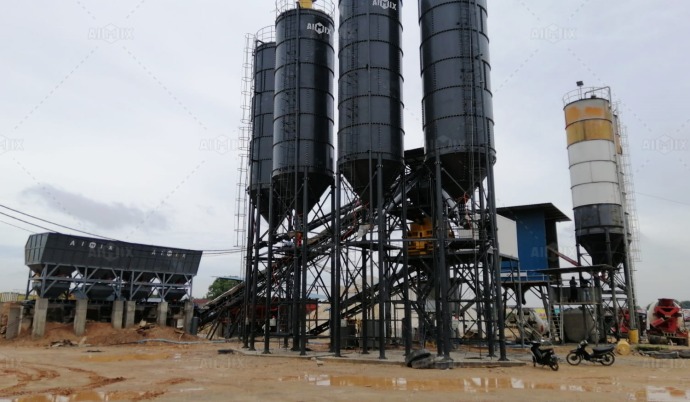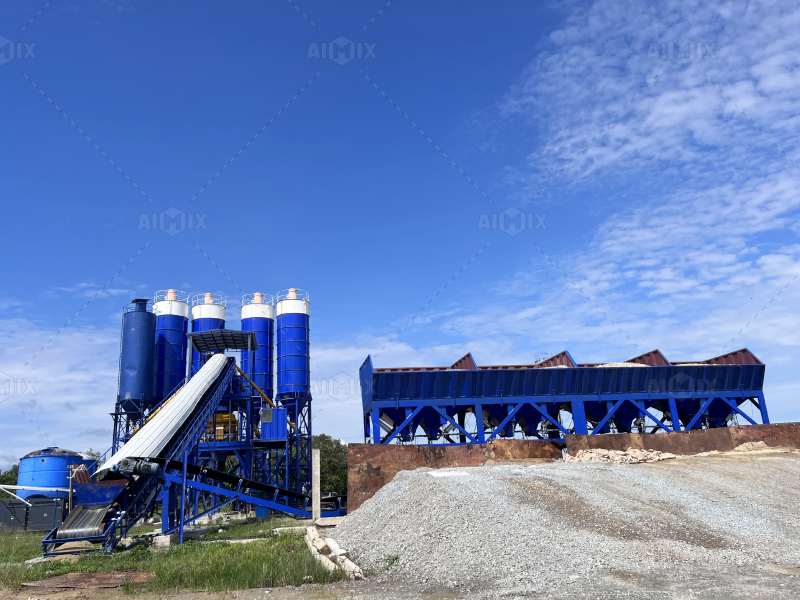In the highly competitive construction industry, contractors and builders are continually seeking ways to reduce operational costs without compromising the quality of their work. One of the most significant areas where costs can be optimized is the Ready-Mix Concrete (RMC) plant, which plays a crucial role in construction projects. RMC plants are an essential component of modern construction, providing a reliable and consistent supply of concrete. However, the costs associated with running an RMC plant, including batching plant equipment, labor, and maintenance, can quickly add up. In this article, we will explore various strategies that contractors and builders can implement to optimize the cost of operating an RMC plant, focusing on different types of batching plants, key equipment, and how to make the most of available options such as concrete batching plant for sale.

1. Selecting the Right Type of Batching Plant
One of the most effective ways to optimize RMC plant cost is by choosing the right type of batching plant for your specific needs. The choice of batching plant will significantly impact your overall costs, from initial investment to ongoing operational expenses.
a) Stationary Batching Plants
Stationary batching plants are large, fixed plants typically used for high-volume production. These plants are ideal for long-term projects such as large-scale infrastructure development or commercial construction. While the initial cost of stationary batching plants may be higher due to the need for significant setup and installation, they provide high production rates, which can lead to cost savings in the long run. Contractors can optimize costs by ensuring the plant is used continuously for major projects, which justifies the investment.
b) Mobile Batching Plants
Mobile batching plants, on the other hand, are more flexible and portable, designed to be moved from one project site to another. These plants are ideal for contractors who need to supply concrete on projects of varying sizes or in different locations. The cost savings come from the ability to relocate the plant quickly, minimizing downtime and reducing transportation costs. The portability of mobile batching plants makes them perfect for smaller-scale or short-term projects, where flexibility and quick setup are paramount.
c) Compact Batching Plants
Compact batching plants are designed for sites with limited space or for projects that require lower concrete output. These plants are smaller, easier to set up, and often more affordable than larger models. Compact batching plants also require less maintenance and are less expensive to operate, making them an excellent choice for contractors working in smaller, urban environments or on specialized tasks like residential buildings. The ability to handle specific concrete requirements with fewer resources makes compact plants an effective cost optimization solution.

2. Investing in High-Quality Batching Plant Equipment
The types of batching plant chosen are only part of the equation. The equipment used within the plant also plays a critical role in optimizing RMC plant costs. High-quality batching plant equipment, such as mixers, conveyors, and storage silos, can significantly impact the efficiency and longevity of the plant, helping to reduce long-term operational expenses.
a) High-Efficiency Mixers
The mixer is one of the most essential components of a batching plant, and investing in high-efficiency mixers can lead to substantial cost savings. Modern, automated mixers offer better consistency, faster mixing times, and improved fuel efficiency, all of which reduce overall production costs. Moreover, efficient mixers help in achieving the desired concrete quality with fewer raw materials, reducing wastage and enhancing overall productivity.
b) Automated Control Systems
Automated control systems are another critical piece of batching plant equipment. These systems allow for precise monitoring and control of the batching process, improving the accuracy of the mix design and reducing the chances of errors. Automated systems also streamline operations, requiring fewer personnel and reducing labor costs. By minimizing manual errors and improving the consistency of the mix, automated systems help contractors avoid costly rework or material wastage.
c) Material Handling Equipment
Efficient material handling equipment, including conveyors, weigh hoppers, and aggregate batching systems, can help reduce material waste, optimize labor usage, and improve the overall efficiency of the batching process. When choosing equipment for a batching plant, it’s essential to select tools that match the scale of production and the materials being used. Properly optimized material handling systems lead to faster production rates and a reduction in downtime, thus lowering costs.
3. Proper Maintenance and Upkeep of the Plant
Maintaining batching plant equipment in top working condition is crucial for cost optimization. Regular maintenance ensures that the plant operates efficiently, reducing the likelihood of breakdowns or costly repairs. Contractors should develop a maintenance schedule based on the manufacturer’s recommendations and adhere to it strictly. Proactive maintenance helps extend the life of equipment, reduces repair costs, and ensures that the plant operates at peak performance.
Routine maintenance tasks include inspecting mixers, checking calibration on automated systems, lubricating moving parts, and cleaning the plant’s components. By investing in regular upkeep, contractors can avoid unexpected downtime and the high costs of major repairs, ensuring that the plant runs smoothly and efficiently.

4. Purchasing Concrete Batching Plants for Sale
For contractors looking to invest in an RMC plant, purchasing a batching plant for sale can be a cost-effective option. Buying a used or discounted plant can significantly reduce the initial capital expenditure, allowing contractors to allocate more resources to other aspects of the project. However, purchasing a used batching plant requires careful inspection to ensure it meets quality standards and is not outdated or prone to frequent breakdowns.
When considering a concrete batching plant for sale, contractors should look for reputable sellers and check the plant’s condition, maintenance history, and warranty offerings. Some concrete plant manufacturers offer refurbished plants, which can provide a middle ground between new and used plants, offering cost savings without compromising on quality.
5. Optimizing Raw Material Usage
Another way to optimize RMC plant costs is by ensuring efficient use of raw materials. This includes reducing waste, recycling excess materials, and using high-quality aggregates that require less processing. By closely monitoring material usage and reducing waste, contractors can lower costs and improve profitability. Implementing a material management system, where materials are tracked from procurement to usage, can help identify inefficiencies and opportunities for savings.
6. Reducing Energy Consumption
Energy consumption is another significant cost in the operation of an RMC plant. Implementing energy-saving measures, such as using energy-efficient motors and minimizing idle time for the equipment, can help reduce overall operational costs. In addition, some modern batching plants are designed to be more energy-efficient, incorporating technologies that reduce power consumption during the mixing and batching process.
Conclusion
Optimizing the cost of an RMC plant is crucial for contractors and builders looking to improve the profitability and efficiency of their projects. By carefully selecting the right type of batching plant, investing in high-quality batching plant equipment, ensuring proper maintenance, and making strategic decisions about purchasing batching plants for sale, contractors can significantly reduce their operational expenses. Additionally, optimizing raw material usage and implementing energy-saving strategies further contribute to lowering costs while maintaining high-quality concrete production. With these cost optimization strategies in place, contractors and builders can ensure that their RMC plant operations remain efficient, cost-effective, and competitive in the fast-paced construction industry.